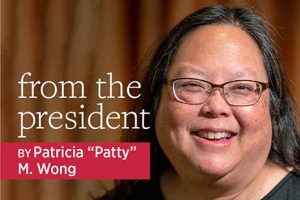
We’ve come a long way since 1994, when a study found that only 21% of public libraries had an internet connection. By 2004, more than 99% of them offered connectivity. Today, nearly 30 years later, libraries are technology hubs where patrons can learn the skills needed to navigate a vast digital world of information, ideas, and communications.
A Public Library Association study released in September 2021 provides a current picture of how libraries serve as digital equity hubs. The study found that more than 88% of all public libraries offer formal or informal digital literacy programming, more than one-third (36.7%) have dedicated digital literacy and technology programs and training staff, and more than one in five provide classes or informal help related to coding, computer programming, robotics, and 3D printing.
Libraries have led the way in many areas, including creating access for the public’s use of library devices and providing opportunities for staff and communities to learn skills to be successful and safe in the online world.
Library professionals have also been among the most vocal proponents of greater connectivity in our communities so that people can access resources for education, health, work, and civic participation in their everyday lives.
We know our libraries are hubs of connectivity for communities that have no other access, and the disparity between the haves and have-nots in our digital age was laid bare during the first months of the pandemic.
When libraries closed their physical buildings in spring 2020, users who relied on their broadband internet were cut off from a vital lifeline. Many libraries responded by leaving their Wi-Fi on around the clock or boosting their signals so patrons could access the internet from the parking lot.
With greater awareness of the importance of broadband connectivity in our communities comes the responsibility of all library workers to advocate for digital equity. I, along with my presidential advisory committee, believe this special issue of American Libraries can be both a resource for the field and a call to action.
In the March/April 2022 issue, you’ll find an article that outlines federal policy and funding options, including recently passed bills and benefits, to fill digital equity gaps in your community. You’ll learn about the Toward Gigabit Libraries Toolkit, a resource that has empowered rural libraries to understand and improve their broadband connections; digital inclusion alliances and how librarians work within these groups to help achieve digital equity goals; and how you can advance digital equity in your library right now, with tips for beginners and those more seasoned in digital inclusion.
One of my favorite pieces in the issue is an infographic on digital equity that looks at how the pandemic has worsened high-speed affordability and increased need, how discount programs like the Emergency Broadband Benefit/Affordable Connectivity Program help communities, how libraries fill the gap, and how federal funding and programs can help.
As library leaders, it is our responsibility to be engaged in this work to ensure our neighbors are connected and able to fully participate in our economy, educational systems, and democracy.
We hope you enjoy this issue of the magazine and that it inspires you to reflect on the progress we have made so far and to participate actively in the work we have yet to do.


